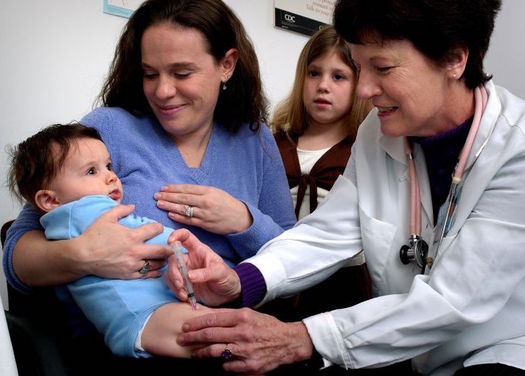Patient-Focused Care is a Growing Challenge
Even before the advent of the Affordable Care Act, a primary goal for healthcare providers has been to get consumers more involved in their own healthcare decisions.
From the now-defunct federal Health Systems Agencies (the original HSAs), to Health Maintenance Organizations (HMOs), to Flexible Spending Accounts, to Health Savings Accounts (the new HSAs), to the more recent Accountable Care Entities, engaging and empowering consumers to make informed choices about their healthcare needs has been both an ongoing objective and challenge.
Healthcare communicators, who are at the heart of providers’ consumer relations and community relations efforts, need to understand what’s driving this important movement.
Key Drivers of Healthcare Consumerism
In a recent webinar sponsored by Thomas Jefferson University’s Jefferson College of Population Health and IBM Watson Health, Dr. David B. Nash, dean of the college, noted that the two biggest factors driving the evolution of healthcare consumerism are utilization and costs.
Dr. Nash pointed to data from 2015 showing that the total expenditure for healthcare in the U.S. topped $3.2 trillion, accounting for 17.8% of the country’s gross domestic product. Per capita national health expenditures amounted to almost $10,000. Almost 60% of those expenditures were tied to two areas of spending: Hospital Care (32.3%) and Professional Services (26.2%).
One key problem, he noted, is quality. More “socialized” national systems found in Canada and Europe provide consumers with better quality at a better price compared to the U.S. health system. At the same time, U.S. consumers are shouldering more of the total healthcare cost burden, including unanticipated costs. According to the Kaiser Family Foundation, U.S. workers’ share of health insurance premiums grew 221% since 1999, while premiums themselves increased 203%.
From a healthcare finance perspective, it’s an unsustainable situation. Empowering consumers to exercise more control over their healthcare spending is part of the solution.
More Education, Transparency Needed
Unfortunately, too many consumers don’t understand what they’re paying for – or how they’re paying for it. Lack of awareness about insurance terms, processes and pricing tend to inhibit patients from getting involved more directly in their healthcare decisions.
“If you can’t define what a copayment is, you won’t be an empowered consumer,” Dr. Nash explained.
Consumers want to understand what is happening, but available data can be overwhelming. Many are turning to social and public sources for information, but lack the ability to translate the data in a meaningful way that would help their decision-making.
Social Determinants of Health (SDOH)
Other key factors driving the evolution of healthcare consumerism are social determinants that describe conditions in which people live, learn, work and play – all of which can have significant impact on an individual’s health risks and outcomes.
Poverty, not surprisingly, is the number one social determinant of health. Those without insurance, or access to regular healthcare checkups inevitably fare worse in terms of early detection of adverse conditions and ensuing complications, chronic health issues, and life expectancy.
A recent Robert Wood Johnson Foundation survey asked American physicians what kind of prescriptions they wish they could write to assist patients with social needs. Among their top answers: Fitness Programs (75%), Nutritional Food (64%), and Transportation Assistance (47%). For doctors whose patients were predominantly urban and low-income, the responses were just as telling: Employment Assistance (52%), Adult Education (49%), and Housing Assistance (43%).
Engagement is Key
To help address many of these needs, many health systems are increasing their focus on community-based care, meeting patients closer to where they live and addressing their individual needs. This trend can be seen in a number of ways:
- Increasingly, large regional health systems are affiliating with traditional community hospitals, based on level, type of condition or geography.
- The popularity and prevalence of retail clinics continues to grow, as health systems see a means to deliver lower-cost local services beyond primary care.
- Bedless hospitals are springing up – newer entities that are often multi-specialty and offer traditional hospital services except for inpatient care.
- The BCBS Institute is partnering with the ridesharing company Lyft to address transportation-based SDOH. The Institute and Lyft will work together to coordinate rides in neighborhoods with limited public transit access and low rates of vehicle ownership.
- The growing popularity of telehealth, mobile technology and digital therapeutics, that allow physicians to provide lower cost care and regularly monitor their patients’ progress almost anywhere at any time.
In addition, spending more time with patients – encouraging them to ask questions, taking time to explain procedures, treatments and options – can be a major factor in improving healthcare outcomes individually and in the community. Healthcare insurance professionals can also play an important role by working closely with consumers to make sure they understand options and nuances involved in their insurance decisions.
Healthcare communicators have a major role to play as well, by paying close attention to the evolving nature of healthcare consumerism and working with their colleagues – healthcare administrators, physicians, nurses and other medical professionals, as well as their allies throughout the community – to reach out, identify and educate consumers to ensure as many as possible get the care and support they need to live healthy, happy lives.
